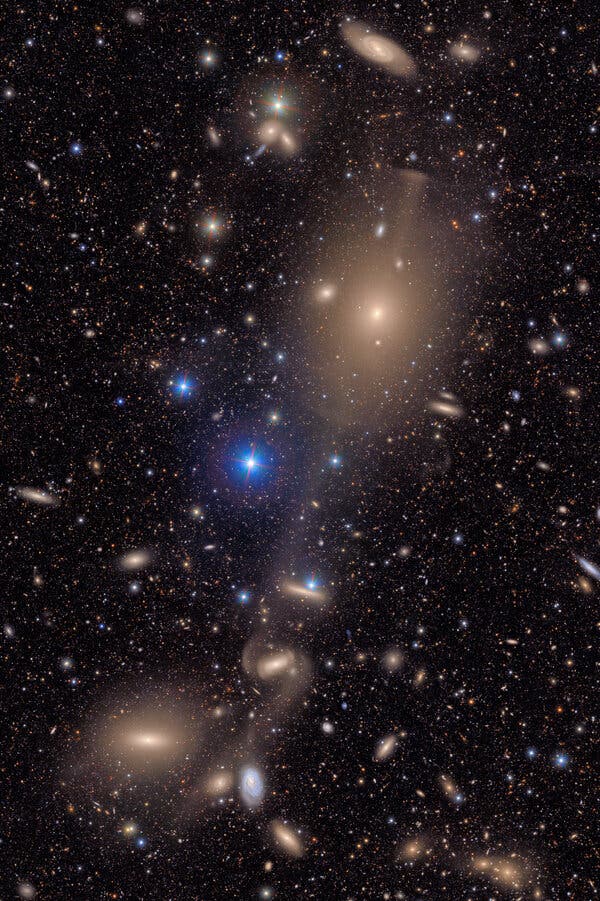
Source: nytimes.com
Image content: The image shows a deep-space view filled with countless galaxies, star clusters, and a few bright foreground stars with diffraction spikes. Large, fuzzy elliptical galaxies dominate the scene, surrounded by many smaller spiral and elliptical galaxies scattered across the dark background. It captures a rich galaxy cluster and the vastness of the cosmos.
Summary
The Vera C. Rubin Observatory in Chile released its first test images, demonstrating the power of its 3.2-gigapixel camera and rapid, wide-field survey design. In brief observations, the facility captured detailed views of the Trifid and Lagoon nebulae, the Virgo Cluster, and millions of distant galaxies, while identifying more than 2,000 new asteroids, including several near-Earth objects. Set to begin its decade-long Legacy Survey of Space and Time within months, Rubin will scan the southern sky every few nights, producing up to 10 million nightly alerts and about 1,000 images per night. This dynamic, high-resolution mapping will transform time-domain astronomy, enabling discovery of transient phenomena, detailed Milky Way mapping, and investigations into dark matter, dark energy, and potentially undiscovered solar system objects.
Key Points
- First images reveal detailed nebulas, millions of galaxies, and the Virgo Cluster
- Over 2,000 new asteroids found in test runs, including seven near-Earth objects
- Decade-long LSST will rescan the southern sky every few nights
- 3.2-gigapixel camera and fast mount enable about 1,000 images per night
- Data will drive discoveries in transients, near-Earth objects, dark matter, and dark energy